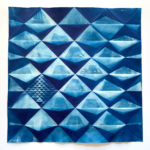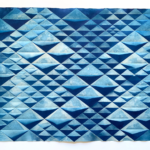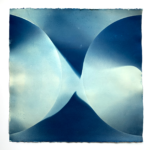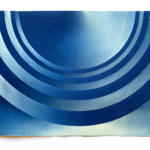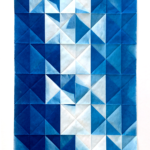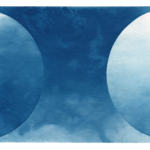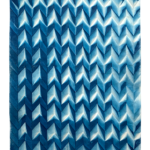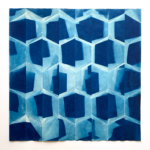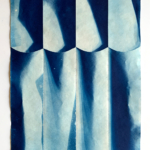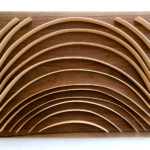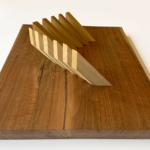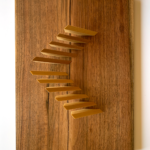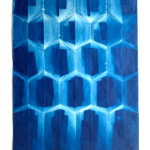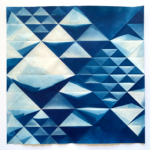Fritz Horstman
Folded Cyanotypes and Formworks
May 28 - July 9
Subjectivity and objectivity oscillate in interesting ways when one looks closely at the systems that make up our world. Aspects of nature that may at first appear fixed and unchanged by the human world take on fluid and fungible features when closely observed. What may seem to be highly personal can expand to something universal. This perceptual fluidity informs the formal, spatial, and environmental concerns that run through all of my Folded Cyanotypes and Formworks. Attention to material and process is paramount.
Folded Cyanotypes is a series of two-dimensional objects, which carry the memory of light, three-dimensional space and manual manipulation, and which stem from an interest in natural structure. Made by first folding paper by hand into an intricate pattern. After unfolding it, cyanotype photographic fluid is applied. Working in the dark to protect the light-sensitive material, the paper is refolded, then placed in natural light, and sometimes manipulated using mirrors and lenses. The paper is then rinsed in water, and pressed flat to dry. What was exposed to light in the process turns blue when developed, and what was not remains white, furthering the spatial complications by reversing lightness and darkness.
The patterns, curves and traces of process found in Folded Cyanotypes live more resolutely in three dimensions in the sculptures that I refer to as Formworks. The title points to their original inspiration in the structures often seen on construction sites, into which concrete is poured. Referred to as formworks, these sometimes incredibly complicated objects are made with a high level of skill, and exist only to create a void, which will cease to exist as soon as the concrete is poured. Formworks focus on that void and on the structure that defines it, suspending the moment of its potential shift into solid form. The series has evolved, but has kept a focus on the non-hierarchical relationship between form and void.
A ‘U’ shaped form connects Folded Cyanotypes and Formworks. This formal element refers to the U-shaped valleys of the glacially-formed landscape of the Northeastern United States, where I live. Valleys are primarily formed by either rivers or glaciers. A river will typically carve a V-shaped valley, while a glacier, once it has receded, will leave a U-shaped valley. The Northeast, and much of the upper half of the northern hemisphere’s present day landscape was formed largely by the receding glaciers of the last ice age. (Think of the Connecticut River valley, or more dramatically, Yosemite.) Through a variety of materials, the U-shaped valley work looks at the relationship between form and void on a grand scale, both relatable – to the degree that we all understand the landscape – and unfathomable, in the scale of geologic time. Focusing on receded glaciers and empty valleys naturally invites a conversation about environmentalism. As Folded Cyanotypes the U-shaped valleys slip back and forth in dimensionality, reading as flat paper, as the memory of when they were folded, and as a depiction of a valley receding into space. As sculptures they are more literally their eponymous form, emphasizing their materiality and scale.
By conflating and overlapping the subjective and objective, form and void, flatness and three-dimensionality, nature and culture, my Folded Cyanotypes and Formworks celebrate the potential of fluidity
Fritz Horstman
May 2021
